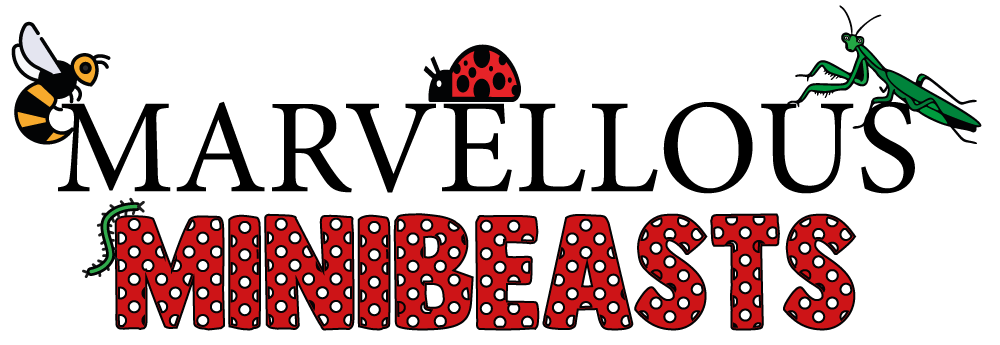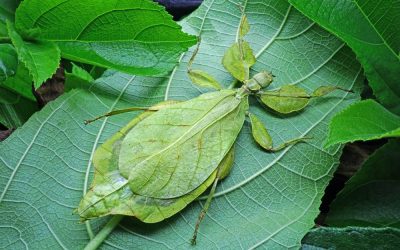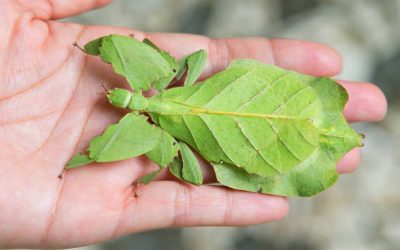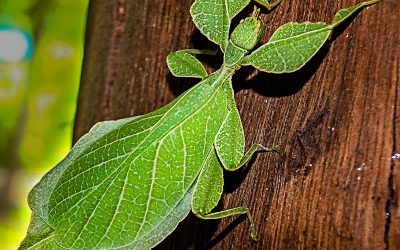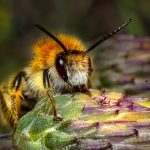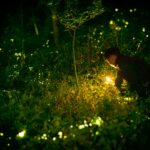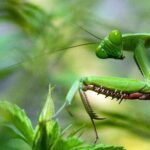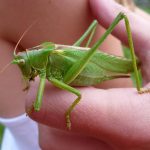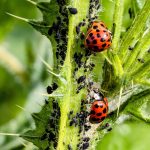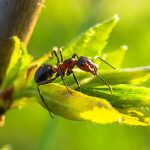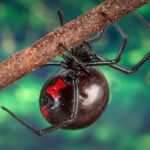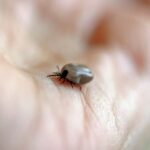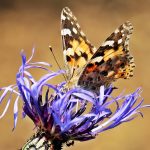Leaf insects are a group of insects that are famous for their incredible ability to mimic leaves and other plant materials, allowing them to blend into their surroundings and avoid detection by predators. These insects are found throughout the world, but are most commonly found in tropical regions. Leaf insects are herbivorous and feed primarily on leaves and other plant materials. They are known for their impressive size, with some species growing up to 13 centimeters in length. Leaf insects are also known for their unique ability to regenerate lost limbs and antennae. Despite their remarkable abilities, leaf insects have a relatively short lifespan, typically living for only a few months to a year.
What is a leaf insect?
Leaf insects are insects that are shaped like leaves, and they belong to the phylliidae family. Leaf insects are tough to spot when they are sitting among real leaves as they camouflage so well. Leaf insects walk in a rocking motion, and when they are in amongst the leaves, they sway to imitate the wind blowing on real leaves.
Difference between male and females
the diagram shows a male and female leaf insect. A is the female and B is the male.
Leaf insects range in size from 1 inch to around 4 inches in length. Males tend to be much smaller and more slender than females. Males have two sets of wings to fly; unlike females who only have one set of wings that don’t allow them to fly, males also have large antennae.
Newly hatched leaf insects are called nymphs, when they are hatched they are wingless and brown or reddish, they become green after feeding on leaves, and they develop wings when they get older.

Keeping leaf insects as pets

Leaf insects are entirely harmless, and they make fascinating pets. The best part about keeping leaf insects is that the food is free and is available in most gardens. They eat bramble leaves and oak leaves.
Care should be taken around very young children as they tend to be a bit too rough, and leaf insects can lose a limb if they are roughly handled. The fantastic thing about leaf insects is they have the ability to regrow a limb if they do happen to lose one.
Enclosures
Unlike many other animals, leaf insects require very little to get set up, and it can be done relatively cheaply. The type of enclosure you keep your leaf insects in is really up to you and what you prefer. Some like shop-bought enclosures and others like homemade equivalents whichever enclosure you choose the rule of thumb when choosing one is that it needs to be at least three times the length, and at least twice the width of your leaf insect. Ideally, the enclosure for one adult leaf insect should be 30x30x30; if keeping more than one then a 30x60x30 enclosure is the better choice.

Heat and humidity

There are many options to choose from when looking for substrates you can use; potting earth, shredded wood, tissue paper, vermiculite, pieces of bark or even sand. Substrate helps to keep moisture in the enclosure stable, but you want to make sure that it doesn’t get mouldy as this can be harmful to your leaf insect.
Light bulbs
If you are going to use a light bulb to heat the enclosure, there will need to be at least a 10cm gap between the bulb and the top of the enclosure; this will stop any leaf insects from becoming overheated if they get too close to the bulb. The strength of the light bulb can be between 25 to 50 watts.
If you choose to use a light bulb then ideally you should put it on a timer. The lights should be switched off for a few hours at night; leaf insects are nocturnal, so they need it to be dark.
It’s ok if the temperature drops overnight as this is what would happen in their natural habitat.

Heat mats

If you are using a heat mat, you should position it on the backside of your enclosure rather than underneath. Using the heat mat on the side will help regulate humidity and stop everything drying out too quickly.
Leaf insects can overheat so you should avoid placing the enclosure in direct sunlight. Even though leaf insects come from warmer climates, an enclosure in direct sunlight will heat up far too quickly and get far hotter than the required temperature. If an enclosure gets too hot, the leaf insects can die.
Substrate
You don’t have to use substrate in your enclosure; kitchen paper will do the job, but your enclosure needs to be kept at around 70% to 80% humidity and using substrate can help keep the enclosure from drying out too quickly. As mentioned before, you can use kitchen roll to line the base of your enclosure, and this works pretty well. It’s also easy to clean up and change each time. There are two downsides to using kitchen roll; It doesn’t look pleasant; leaf insects poop a lot! And the enclosure can get messy very quickly.
It dries out quickly, so you will need to spray it daily.
River sand is an excellent substrate to use in your enclosure as it holds the moisture pretty well. Coconut fibre substrate or coconut fibre mats are also a great way to keep your enclosure’s humidity levels stable. You can also use potting soil or vermiculite, but I prefer the latter.

Feeding your leaf insects

Leaf insects are herbivores which means they only eat plants. they like to eat blackberry bramble, oak, hawthorn and rose leaves which is great as they are readily available in most gardens.
When sourcing leaves for your leaf insect, it is best if they are attached to the stem. Stems should be no taller than the height of the enclosure. To keep your leaves fresher, for longer, you can place them in a pot of water. Take care when doing this if you have nymphs, as they can drown in even a tiny amount of water. They can even climb in the water pot if you are not careful. What I do is cut a small hole in the lid and feed the stems into the water. Doing it this way means the leaves don’t tend to need changing for about a week. Simply discard the old stems and wash the container before replacing them. If you have nymphs, then you will need to damage the leaves so that they can eat them. You can do this by cutting or tearing them.
Leaf insect facts
Leaf insects are a group of insects known for their remarkable ability to mimic leaves and other plant material in order to blend in with their surroundings. Here are some interesting facts about leaf insects:
Females don’t need a male in order to reproduce, and their eggs are often camouflaged to look like plant material, which helps to protect them from predators.
There are over 50 species of leaf insects found throughout the world, mainly in tropical regions.
Male leaf insects have wings, so they can fly short distances.
Leaf insects are known for their impressive size, with some species growing up to 13 centimeters (5 inches) long.

Important information
Leaf insect enclosures are the perfect breeding ground for mould due to the humidity and heat, so be sure to keep an eye on it and clean it thoroughly each time to avoid mould growth. If you do have regular mould growth, this is a sign that there is not enough ventilation in your enclosure.
If you want to keep both leaf insects and stick insects, you must keep them in separate enclosures. If food is scarce, the stick insects will almost certainly eat the leaf insects.
Always check the leaves you intend to feed to your leaf insect because predators might be attached to them. We had a spider sneak into our enclosure, and it attacked our leaf insect, causing her to lose a leg.
You might also Like
Why Are My Leaf Insects Not Hatching?
There are lots of different reasons why people might want to keep leaf insects as pets, and while some are just looking for an interesting pet, others might want to breed them.
Wanting To Start Keeping Leaf Insects
Leaf insects make fantastic pets for children of all ages.
Why Are My Leaf Insects Dying?
If you keep leaf insects as pets, and they are dying or have already died, then it is likely that something was wrong with either their diet or environment, and there are some things that need to be quite specific.
Why Do Leaf Insects Look Exactly Like Leaves?
One of the most curious things about leaf insects is that they look almost exactly like leaves, and if you looked at one at a glance, you would probably think that it was a leaf.
Do leaf Insects Bite or Sting?
Whether you own your very own stick insect, or you are thinking about getting one, you probably have lots of questions about this type of insect, especially concerning whether or not they can bite or sting you.
